What Kind of Water Filtration System Do You Need for Camping?
Updated: Oct. 04, 2023
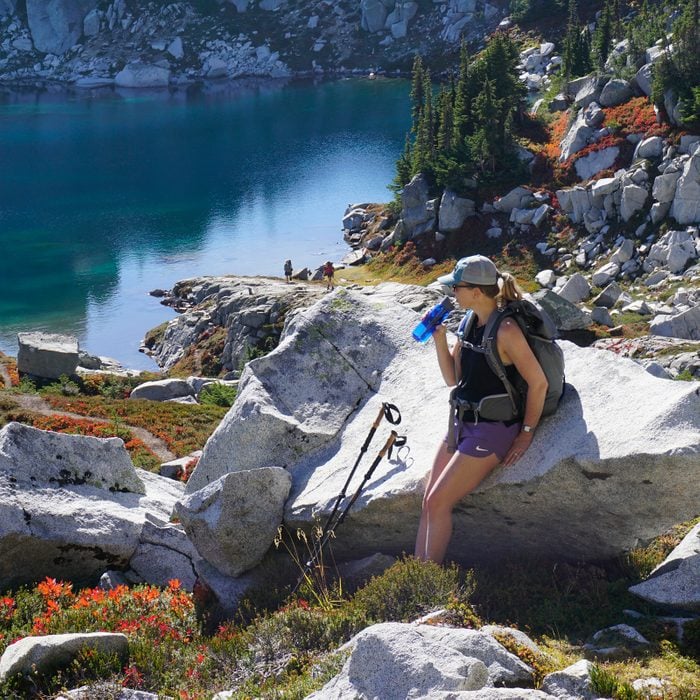
From hand pumps to UV filters, there are a dizzying number of ways to make water safe to drink. Here's how to sort out what you need.
When you’re far from civilization, a reliable water filtration system can be a lifesaver.
That sparkling high mountain stream might look clear and refreshing, but there could be nasty things lurking in it. Microorganisms can cause weeks-long diarrhea and other infections, certainly ruining your trip. Fortunately, camping tech-heads have spent decades perfecting portable water filters to prevent such problems.
Portable water filters are also helpful if a natural disaster strikes, when city water can be temporarily contaminated. We rely on them when traveling to countries where water potability is in question. Closer to home, we also use our jerrycan purifier with campground spigots, just to be sure.
Here’s what to know and how to choose the best water filtration system for your camping adventures.
On This Page
Water Filtration vs. Water Purification: What’s the Difference?
In general, camping water filters eliminate immediate threats which can quickly make you sick. They remove microorganisms like protozoa and bacteria, while water purifiers also remove viruses. All reputable water filters and purifiers remove Giardia and cryptosporidium, the most common microorganisms that sicken campers in North America.
Camping water filters can also reduce, but don’t remove, longer-term exposure hazards like fertilizers, pesticides, microplastics and heavy metals from mining.
What Is a Water Pre-Filter?
A pre-filter takes out large particulates like dirt, sand and pine needles so they don’t clog the filtration or purification device. If you’re pulling water from a creek or pond, it’s good to have one to extend the life of your filter, but not necessary for safety.
“We jokingly refer to pre-filters as frog and fish filters,” says Justin McGregor, product line manager with Cascade Designs.
Types of Water Filters and Purifiers for Camping
You’ve got your choice of camping filters and other ways to make water safe to drink. These include:
Hand pump purifiers and filters
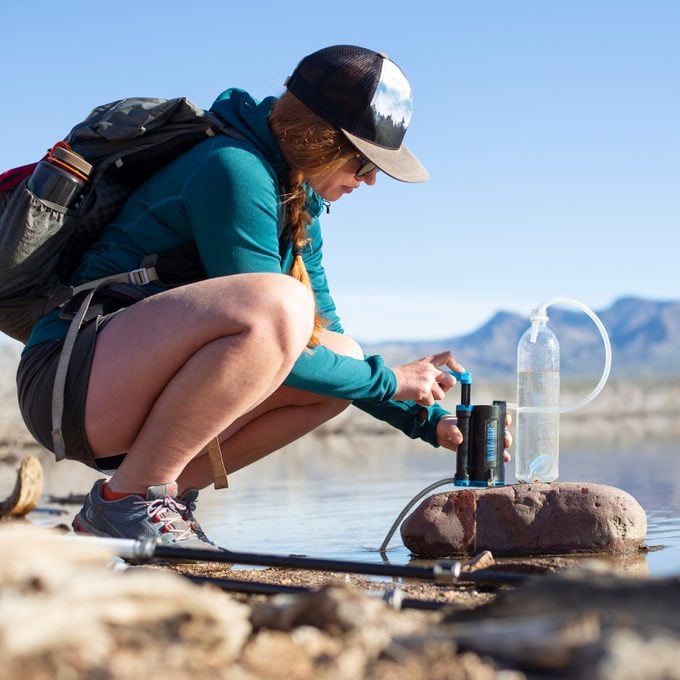
These can be compact and handheld, like the MSR Guardian and LifeSaver’s Wayfarer, or countertop size, like the LifeSaver Jerrycan and and LifeSaver Cube. Most are purifiers. The smaller ones are particularly coveted by backpackers and those traveling abroad.
“These tend to be some of the longest-lasting filters,” says McGregor. “They are also best for getting water from small water sources where scooping a gravity or squeeze system may be tough.”
Electric pump purifiers
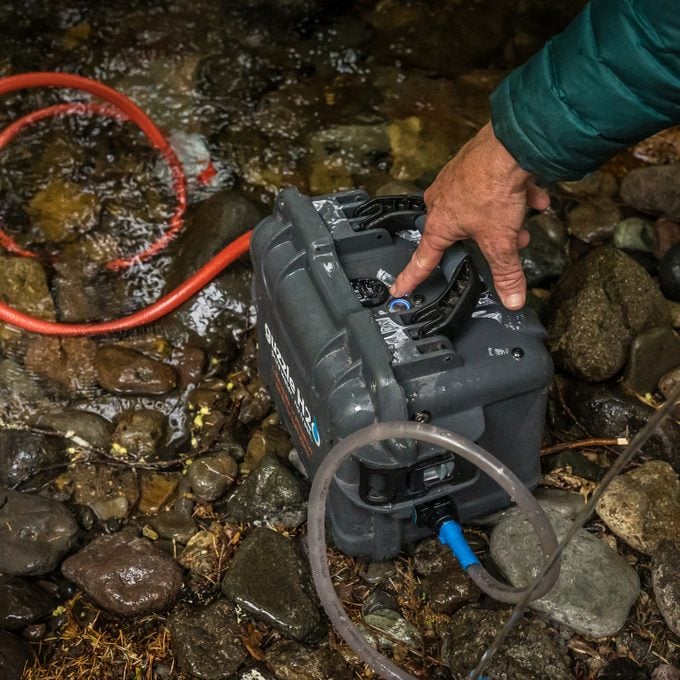
Rechargeable purifiers, like the Guzzle H2O Stream, draw water from a stream or lake through a hose to your vehicle basecamp with the push of a button.
They’re great for anyone who can’t tolerate the physical exertion of a hand pump, or if you simply don’t want to keep hauling water from the source to your campsite. We’ve also found the Guzzle makes campground tap water taste better.
Gravity filters and purifiers
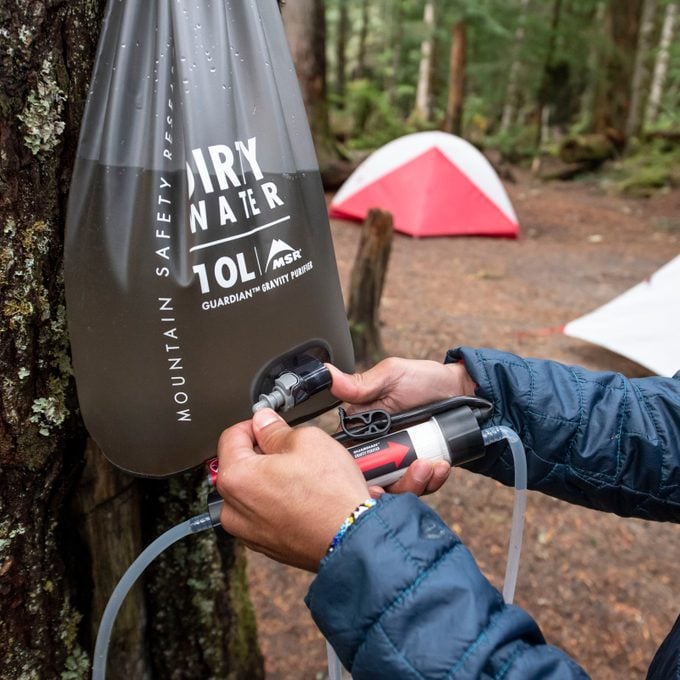
Gravity filters look like hanging plastic sacs, where water exits the bottom through a filter. Some are filters, like the Platypus GravityWorks and Sawyer Gravity System, while others are purifiers, like the 10L MSR Guardian Gravity Purifier. Compact and lightweight, they’re great for group camping because they can store and treat lots of water.
Squeeze filters
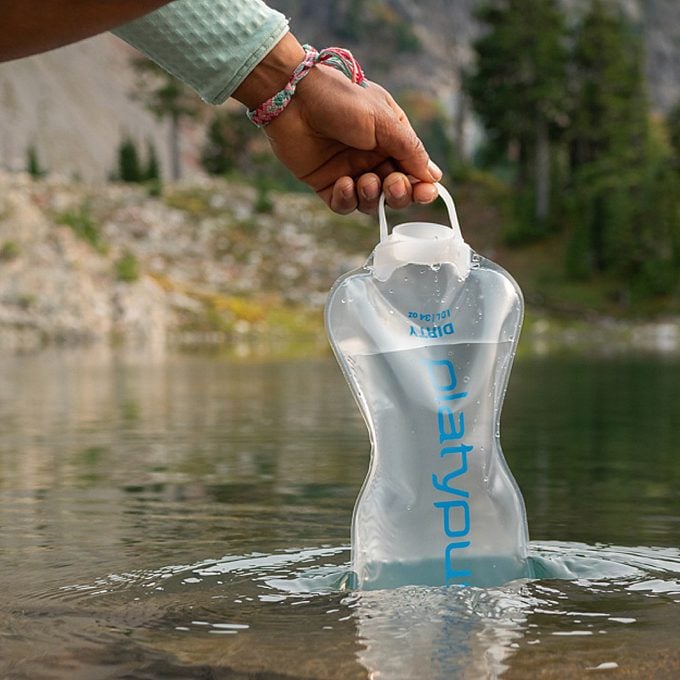
As the name implies, these filter water by squeezing it out of an opening. Some come as a small filter that attaches to a compact bag, like Sawyer’s Squeeze. Others go on a bottle or a bag, like Platypus’s QuickDraw.
“They are great for trips where weight and speed are my priority,” says McGregor. “With a system like this, I’m quickly able to scoop water and squeeze it into another bottle and just keep hiking.”
They can’t, however, remove viruses. Doing so requires more pressure than the squeeze system provides.
Straw filters
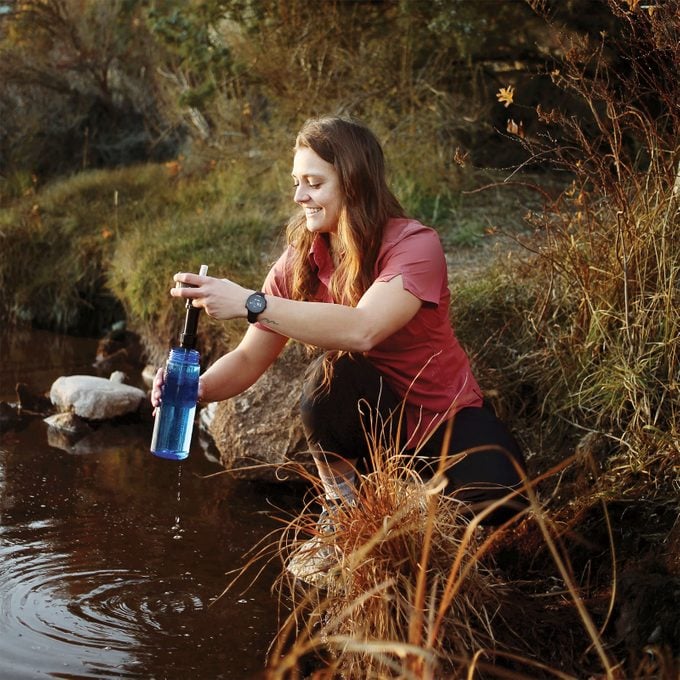
Pocket-sized filters, like LifeStraw’s Peak, are great for emergency kits and day hikes. Just stick it in the river and suck through it like a drinking straw. Some straws come built into a bottle, like Sawyer’s Bottle Water Filtration System. Both can remove some silt as well.
UV treatment
These products usually feature a small battery-powered or rechargeable wand that you wave in a bottle of water. One example is the Katadyn’s Steripen purifier.
These work best when the water you’re treating is clear, like a glass of tap water. Otherwise, bacteria and protozoa can hide behind sediment and survive. “If you do choose UV, make sure to pre-filter first and make sure to bring backup batteries,” says McGregor.
Chemical purification
Various chemicals, including iodine, sodium dichlorisocyanurate and chlorine dioxide, can be used to kill microorganisms, including viruses. They usually come as tablets you plop in your water bottle.
Inexpensive, compact and lightweight, they usually leave water tasting like chemicals. They may take hours to be effective and, if dosed incorrectly, can be toxic. They also don’t remove turbidity, like sediment that discolors the water.
Boiling water
While effective for removing microorganisms, including viruses, boiling water doesn’t remove particulates. Be sure to boil it rapidly for at least one minute at lower elevations and three minutes at higher ones.
“The downside is that boiling uses a lot of stove fuel and leaves you with hot, dirty water,” says McGregor.
What To Consider When Choosing a Camping Water Filter or Purifier
First, decide whether you want a filter or a purifier.
“Many people think they only need to protect themselves from bacteria and cysts, as viruses are more of a Third World problem,” says Joe Lovegrove, technical and operations director at LifeSaver. “Unfortunately, prevalence of sewerage in our rivers from runoff and animal-borne pathogens are more regularly occurring now in the first world, too.”
Still, filters should be adequate in most North American camping situations.
Next, consider:
- Water source: Are you getting it from a stream or lake with turbidity?
- Capacity: How many people do you need to filter water for?
- Weight and size: Are you car camping, traveling on an airplane or backpacking?
- Budget: Filter/purifier systems can range from $10 to $400 or more.
- Speed: How long can you tolerate waiting for drinkable water?
- Testing: Water filters and purifiers are unregulated. To make sure a model lives up to its claims, choose a filter that’s certified NSF P231 or a purifier with a P248 rating.
- Lifespan: How many gallons of water can the unit go through before it needs a new filter, and how much will that new filter cost?
- Taste: Some products use secondary activated carbon filters. These catch additional contaminants and make musty or otherwise odd-tasting and smelling water palatable.
Also, depending on your camping destination and set up, get creative with various container and filter combinations.
When we’re overland car or van camping a long way from civilization and don’t know where we’ll find a reliable water source, we add mounted, stackable Rotopax water containers to increase our capacity and supplement our jerrycan. Plus, bring a small hand pump for shallow water sources.
